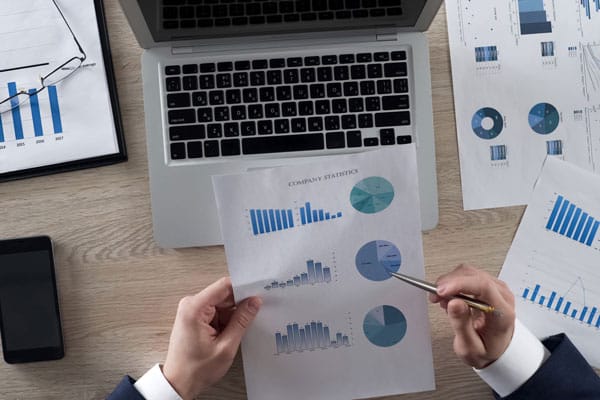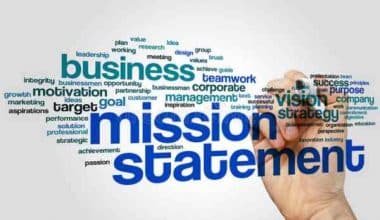When it comes down to it, academics work together, pool resources, and analyze data using statistical analysis methods to spot patterns and trends. Everything about how businesses operate has changed dramatically during the past decade. Whether it’s the tools in the office or the means of communication, it’s not unusual for things to look the same after some time has passed. If a company has a large amount of data, a statistical method could assist it to decipher the information. The use of statistical methods allows organizations to better survey customers, plan experiments, evaluate investment prospects, and track the record book. Learning these statistical methods will provide you with more options when conducting data analysis, allowing you to make more informed business decisions. So, in this article, we will discuss statistical methods of sampling and quantitative research.
What are Statistical Methods?
Statistical models are methods that can be utilized to assist in the analysis of data sets. In the process of statistical methods, also known as the collection and interpretation of quantitative research, specialists make use of statistical approaches. However, your ability to evaluate the characteristics of a sample size inside a specific population and apply our results to the wider group can be facilitated by the utilization of statistical methods. Although statisticians and data analysts may utilize statistical models more frequently than other people, many others, including marketing representatives, company executives, and government officials, might benefit from having a better understanding of statistical methods.
Furthermore, when it comes to artificial intelligence and machine learning, statistical methods are valuable scientific techniques for collecting and analyzing huge datasets to reveal recurring patterns and trends that may then be used to derive actionable insights. Simply said, statistical analysis is a method for making sense of large amounts of unorganized data.
Through statistical methods, we establish insights that aid in making decisions and provide a foundation upon which firms can build projections for the future. Data science is the discipline of gathering and analyzing data to find patterns and convey the results. Businesses and other organizations employ statistical analysis to make sense of data through numerical manipulation.
What Are the Statistical Methods?
Here are the statistical methods:
#1. Mean
Total your numbers, then divide by the total number of numbers in the set to obtain a mean value. As an illustration, let’s say a data set contains figures 2, 5, 9, and 3. To determine the average, add up all the numbers until you reach 19, then divide that number by 4.
The mean, often known as the average, is a statistical measure that looks for a pattern in your data set. When there are few outliers, the mean is best for data analysis. The mean is a quick and easy approach to summarizing your facts.
#2. Standard Deviation
The standard deviation is a statistical measure used to assess the dispersion of data in relation to the mean.
A large dispersion of the data from the mean is indicated by a high standard deviation. With a low standard deviation or expected value, most of the data points fall in line with the mean.
The standard deviation helps you determine how far apart your data points are and whether they cluster.
Let’s pretend you’re a marketer who just finished up a survey of customers. When you receive the survey findings, you should check their validity to determine if other consumers agree with you. A small standard deviation indicates that the results can be extrapolated to a larger consumer base.
#3. Hypothesis Testing
The goal of testing a hypothesis is to see if a certain assumption or quality fits the facts at hand. Hypotheses compare the null hypothesis—that your data set occurred by chance—to the alternative—that it represents demographic patterns. Tests of hypotheses, also known as t-tests, examine the correlation between two sets of random variables in your data collection. Hypothesis testing, unlike mean or standard deviation, enables you to test your variable relationship assumptions.
It’s not uncommon for businesses to assume that developing a higher-quality product will require more time and, in the end, bring in more money. A hypothesis test can be used to examine this assumption by examining the company’s prior product quality, speed, and profitability.
#4. Regression
The term “regression” is used in the field of statistics to describe the connection between a set of independent variables and a set of dependent variables.
The fact that changes in one variable lead to changes in others provides another possible explanation. If one or more variables affect the result, then the outcome is dependent on those factors.
However, regression analysis graphs and charts show trends over time and demonstrate varied relationships with lines.
Although outliers on a scatter plot (or regression analysis graph) are important, so are the reasons why they’re outliers, and regression isn’t highly distinctive, which might be a drawback when conducting statistical analysis. This could be due to a number of factors, including incorrect analysis or improper scaling of the data.
Outliers in data might signify a wide variety of things, including your best-selling item. The regression line smoothes the data, making it easier to overlook outliers and focus on patterns.
#5. Sample Size Determination
Because of the growing prevalence of big data in the corporate world, some organizations are choosing to significantly shrink the bulk of the data they collect. Choosing a suitable sample size is what researchers call this step. Choose the optimal size of your sample to ensure that your results are representative of the entire population. While there is no foolproof method for determining sample size, proportions, and standard deviation are two helpful metrics to consider.
As there are too many consumers worldwide, a global corporation may not be able to conduct extensive market research. Instead, you might use sample size determination to acquire reliable results with fewer participants in your study.
You will need to make certain assumptions if you use this method to analyze a novel and untested data variable. If you make that assumption, you can be absolutely wrong. Inaccuracies in this phase of statistical methods can have far-reaching effects on the quality of the final product.
Sampling errors are one type of error that can be quantified with a confidence interval. If you repeat the investigation and have 90% confidence in your findings, they’ll hold up 90% of the time.
Statistical Methods Analysis
Simply put, statistics is the study of collecting, sorting, analyzing, and representing information in numerical form in order to draw conclusions about a population from a representative sample, which can then be put to use by business professionals in order to solve problems.
Many businesses, therefore, rely extensively on statistical analysis methods in their efforts to organize data and anticipate future trends depending on the information.
To be more specific, statistical data analysis is concerned with data gathering, interpretation, and presentation. Problems of a complicated nature can be tackled in tandem with data manipulation. To be more specific, the statistical analysis methods lend importance to numbers that would otherwise be meaningless or useless.
Definition of Statistical Methods Analysis
Statistical analysis methods are performed on collections of data, and the analysis procedure can produce many forms of output based on the input data. The method can yield input data features, proof of the null hypothesis, data summaries, key-value derivations, etc. The analysis technique determines the format and type of output. Analysts and other professionals who work with enormous datasets and complex scenarios could benefit from using such a program.
There is widespread reliance on it among governmental agencies and corporate management teams. In politics, statistical data analysis offers the raw material for new theories, campaigns, and policies.
In order to facilitate analysis, there is numerous statistical analysis software that falls under the umbrella of business intelligence tools. Microsoft Excel, SPSS (Statistical Program for the Social Sciences), MATLAB, and SAS are examples of analytical software (Statistical Analysis Software).
What Are the Types of Statistical Methods Analysis?
To be more specific, statistical analysis methods are compiling and analyzing data from multiple sources to reveal patterns or trends and forecast future events/situations for the purpose of making informed judgments.
There are a variety of statistical analysis methods, and their applicability varies greatly depending on the nature of the data.
#1. Descriptive Statistical Analysis
The core focus is on the use of numerical and graphical methods for the purpose of data organization and summary. It makes it easier to understand massive datasets, even when no additional conclusions or assumptions are derived from the data.
Descriptive statistical analysis uses numerical calculations, graphs, and tables to better represent and interpret data than raw data processing.
Also, descriptive statistical analysis entails a number of procedures, from initial data collection to final interpretation, including tabulation, a measure of central tendency (mean, median, mode), a measure of dispersion or variance (range, variation, standard deviation), skewness measurements, and time-series analysis.
The descriptive analysis encompasses tabular summarizing, graphical management, and population-wide data presentation.
It also helps with summarizing and interpreting data, as well as extracting unique characteristics. In addition, there are also no conclusions made with respect to the populations that were not included in the observations or samples.
#2. Inferential Statistical Analysis
If it is not possible to examine every member of the population directly, then inferential statistics are employed to extrapolate the data collected to the entire population.
In other words, inferential statistical analysis allows us to draw conclusions about future outcomes beyond the data provided, and to test hypotheses based on a sample of data from which we can extract inferences using probabilities and generalize about the total data.
This is the best method for generalizing from limited data to the entire population and making policy choices. So, this strategy makes use of sampling theory, a number of significance tests, statistical control, etc.
#3. Prescriptive Analysis
The prescriptive analysis is a look at the numbers. It is commonly used in the field of business analysis to choose the most appropriate course of action.
In contrast to other forms of statistical analysis that may be used for driving exclusions, this one gives you the correct answer. The primary goal is to identify the best recommendation for a selection procedure.
The prescriptive analysis uses simulation, graph analysis, algorithms, complex event processing, machine learning, recommendation engine, business rules, and more.
On the other hand, prescriptive analysis is closely related to descriptive and predictive analysis, the former of which explains data in terms of what has happened and the latter of which looks ahead to what might happen, and the latter of which here focuses on making appropriate suggestions among the available preferences.
#4. Exploratory Data Analysis (EDA)
Data scientists frequently employ EDA, or exploratory data analysis, a technique that complements inferential statistics. In the world of statistics, this is ground zero, as it is the first stage in collecting and organizing data.
EDA does not anticipate or generalize; it previews data and helps extract key insights from it.
The strategy relies heavily on identifying trends and regularities in the data to infer meaning. Discovering previously unseen connections within data, vetting acquired data for gaps, gleaning the most useful insights possible, and testing theories and assumptions are all viable approaches to EDA.
#5. Mechanistic Analysis
While mechanistic analysis is the rarest of the above, it is valuable in the context of big data analytics and the life sciences. Its aim is not to foretell the future but rather to shed light on the underlying causes of an event.
Although ignoring outside effects and presuming that the entire system is influenced by the interaction of its own internal elements, it makes use of the clear idea of recognizing individual changes in variables that cause changes in other variables appropriately.
For the most part, the mechanistic analysis aims to do the following;
- A concise history with supporting facts and a concentration on details for a small set of duties.
- Recognizing the unmistakable shifts that could result in alterations to other factors.
In the field of biology, for instance, this would entail examining the effects of treatment modifications on distinct virus components.
#6. Predictive Analysis
With the help of historical data and present-day information, predictive analysis can foretell what will happen next.
Predictive analytics, in its simplest form, makes use of statistical methods and machine learning algorithms to provide a description of potential future outcomes, behaviors, and trends based on current and historical data. Data mining, data modeling, AI, machine learning, etc., are all examples of popular methods used in predictive analysis.
Marketers, insurers, online service providers, data-driven marketers, and financial institutions are the most likely to conduct this kind of analysis in today’s business environment. However, any company can benefit from it by preparing for the future, in order to do things like gain a competitive edge and reduce the risk associated with an uncertain event.
Future occurrences can be predicted with data, and the likelihood of certain trends in data behavior can be determined. Thus, companies employ this method to answer the question, “what might happen?”, where a probability measure serves as the foundation for creating forecasts.
#7. Causal Analysis
In a broad sense, causal analysis aids in comprehending and ascertaining the reasoning behind “why” things happen or why they appear to be as they do.
Consider the current business climate: many ideas and businesses have failed as a result of external factors. In such a scenario, a causal analysis would help pinpoint the underlying reasons for these setbacks.
This is used in the IT sector to examine software quality assurance, including product failure, bugs, security breaches, and more, rescuing enterprises from potentially devastating scenarios.
Instances where a causal analysis might be useful include;
- Locating major issues within the data,
- By digging into the underpinnings of the issue or failure,
- Knowing what will happen to a given variable in response to a change in another variable.
It’s also important to note that the way in which the data is being used has a major impact on the statistical treatments or statistical data analysis approaches listed above. Data and statistical analysis methods can be used for a wide range of objectives, each of which depends on the nature and goals of the study in question. For instance, medical researchers can put a number of statistical methods to use when assessing the efficacy of potential new medications.
Data professionals have a wide range of interests that can be informed by the abundance of available data; as a result, statistical analysis methods can yield useful results and draw useful conclusions. Information about people’s preferences and routines can also be gathered through statistical analysis.
Analysts can learn about user behavior and motivations by analyzing Facebook and Instagram data. With this data, advertisers may better reach their intended audience with targeted commercials. It’s also useful for app makers because they can gauge user reactions and behavior and adjust their products accordingly.
Statistical Methods of Sampling
In most studies of human populations, collecting data from each and every member of the population is just not feasible. Choose a sample instead. The research participants, or “sample,” are the real people who will be asked to take part in the study.
The selection of a sample that is representative of the total group is crucial for the reliability of your results. There is a name for this procedure: Statistical methods of sampling.
When conducting quantitative research, you have a choice between two main statistical sampling methods:
- Probability Sampling: relies on a random sampling method, from which reliable statistical findings are possible about the complete set.
- Non-probability sampling: uses a method of selection other than chance, such as proximity or other criteria, to streamline data collection.
Probability Statistical Methods of Sampling
By using statistical methods of probability sampling, researchers may be sure that their survey results are representative of the population as a whole. Types of Probability Sampling Techniques
#1. Stratified Sampling
In this form of sampling approach, the population is segmented into groups referred to as strata depending on certain factors that are shared by the factors, such as location. After that, samples are chosen from each group utilizing a straightforward random sampling procedure, and after that, a survey is carried out on the individuals included in those samples.
#2. Cluster Sampling
In this form of sampling procedure, each member of the population is given a place in a distinct group that is referred to as a cluster. After employing a method of simple random sampling to choose a sample cluster, a survey is carried out on the individuals that make up that sample cluster.
#3. Multistage Sampling
In this kind of situation, a mix of multiple sampling approaches at various points in the process. For instance, in the first stage of the process, cluster sampling can be utilized to select clusters from the population, and then, in the second stage, sample random sampling can be utilized to select elements from each cluster for the final sample.
Non-Probability Statistical Methods of Sampling
The methods of sampling that do not rely on probability are not only practical but also economical. Yet, they do not make it possible to determine the degree to which the sample statistics will likely differ from the parameters of the population. whereas statistical sampling methods like probability sampling make that kind of analysis possible. The following is a list of the different types of non-probability sampling methods:
#1. Convenience Sample
With these types of statistical sampling procedures, the surveyor chooses respondents based on how readily available they are to provide their responses. For illustration’s sake, let’s say a surveyor decides to do their research in a movie theater. If the movie theater was chosen because it was more convenient to go to, then the sampling method in question is known as a convenience sample.
#2. Voluntary Sample
In these types of statistical sampling methods, participants in the survey are requested to give their information voluntarily on their own time. One excellent illustration of a voluntary sample is an online poll conducted by a news program in which viewers are requested to take part. In a voluntary sample, the respondents to the survey are the ones who choose the sample to be taken from them.
#3. Purposive Sampling
Also known as “judgment sampling,” this method relies on the researcher’s knowledge and experience to select a sample that will yield the most relevant results.
The population is tiny and specific, or the researcher just wants to learn more about the issue at hand, in which case qualitative research is a good fit. For a purposive sample to be useful, it needs to have well-defined parameters and an obvious justification for being selected. Make sure to outline your inclusion and exclusion criteria, and watch out for the effects of observer bias on your arguments. Also, read STATISTICAL ANALYSIS: Types, Techniques, and Purpose.
Statistical Methods in Quantitative Research
Many students feel uneasy when struck with the prospect of learning how to analyze quantitative data. It’s understandable; quantitative analysis is dense with unfamiliar concepts and terms like medians, modes, correlation, and regression. Everyone is suddenly wishing they had paid more attention in math class.
The good news is that even those of us who shy away from numbers and math can pick up a rudimentary understanding of quantitative research statistical methods with relative ease.
Furthermore, quantitative analysis is performed by a researcher with advanced statistical and mathematical skills to draw conclusions about the entire population from a small subset of data. This method of analysis is used, for example, when drawing conclusions about a community based on data collected from a sample chosen to be statistically representative of the population at large. Statistical inference relies heavily on the research results of quantitative analysis methods, and statistical inference is only possible once the data has been analyzed.
How Does It Work?
As quantitative data analysis is concerned with numerical data, it stands to reason that statistical methods would play a role in such research. The quantitative analysis runs on the back of statistical analysis methods, which range from relatively simple computations (such as averages and medians) to more complex analyses (for example, correlations and regressions).
Also, estimation is a common tool in quantitative analysis, and it is typically based on the theoretically optimal characteristics of an estimator. Unbiased, high-performing, consistent, and adequate estimators are sought after in quantitative analysis.
Results from the unbiased estimator are not skewed in any way. As a corollary, in quantitative analysis, an estimator is considered to be unbiased if and only if the median of the sampling distribution of the statistic in question is the same as the parameter in question. If an estimator in an analysis provides an estimate for a parameter plus a constant, then it is not unbiased. Similarly, in quantitative analysis, the best estimator is one that possesses both the above qualities and a number of others.
Conclusion
In business, it’s critical to be able to think critically. Given the importance of data in the modern world, its wise application can improve both outcomes and decision-making.
Pay careful attention to each potential pitfall and its corresponding formula regardless of the statistical analysis approaches you choose. There is no one best way to do something and no absolute standard. This will be determined by the data you’ve collected and the inferences you draw from it.
Statistical Methods FAQs
What are the types of statistics?
Descriptive statistics, which characterizes characteristics of sample and population data. Inferential statistics uses those properties to test hypotheses and draw conclusions.
Why are statistical methods important?
- How to create more efficient surveys for clients and workers
- Producing experimental research, like a test of a new product in development
- Considering the merits of a possible investment
- Researching and testing hypotheses.
Similar Articles
- SALES PROMOTION: The A-Z Guide.
- Demand Planning: Overview, Comparisons, Salaries & Jobs
- TECHNIQUES FOR DATA MINING to Scale any Business in 2023
- DATA ANALYST: Overview, Salary, Job, Resume & All You Need






